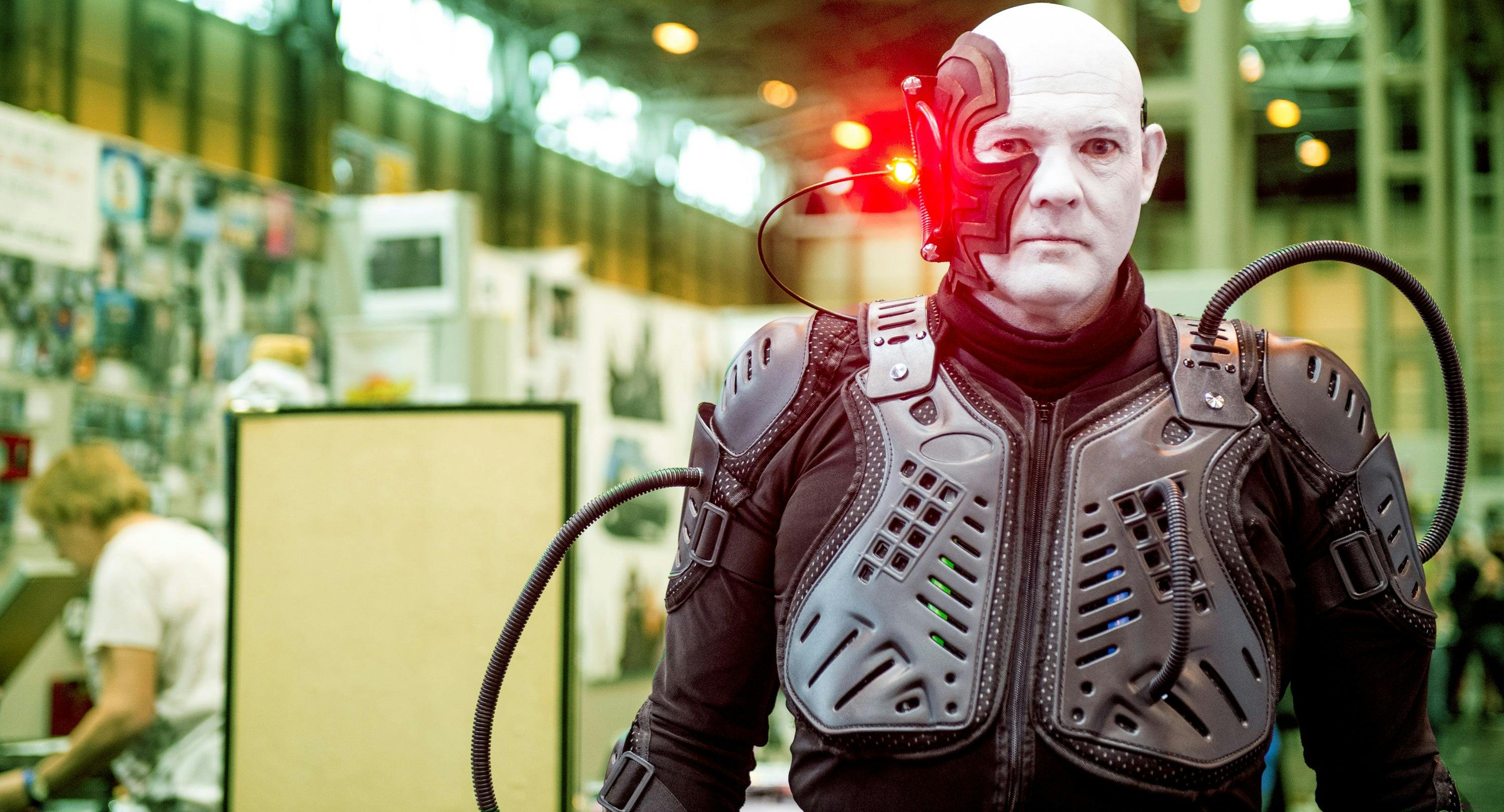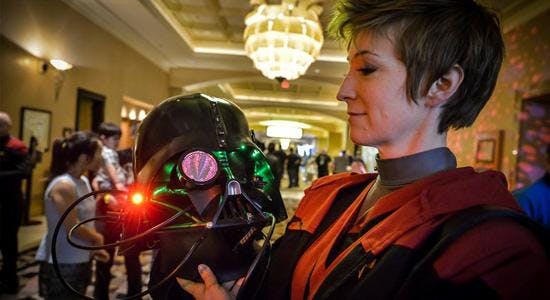Published Jul 6, 2019
Cosplay 101: Your Guide to Getting Started
With Star Trek Las Vegas right around the corner, here's everything you need to know to get your costume right.

Ollie Millington
Standing in line, not in costume, at the Star Trek Las Vegas convention a few years ago was an eye-opener for me. I’ve spent most of my life in theater, so wearing costumes is as comfortable for me as wearing everyday clothing. As a result, I’ve been in going in costume to most of the Star Trek conventions I’ve attended. But on this particular early Sunday morning, I’d worn something I could get into quickly: boring jeans and a tee-shirt. Standing in line talking with some new friends who had no idea that I usually wear a costume, I heard their somewhat negative perspective on the costumed conventioneers. And I was surprised. I had never heard these kinds of perspectives while actually wearing a costume.

I’m grateful for the conversation because I learned several things: One, that there are actually people out there who enjoy conventions and don’t enjoy costumes. I also learned that people at Trek conventions are polite. Well, I already knew that, but this was a new aspect to it. They live and let live, knowing the silly costumed people around them weren’t hurting anyone and respecting differences enough to not say a thing to someone when they suspect it might hurt that person. And, finally, I learned that there are likely people out there who want to cosplay but haven’t yet because they’ve heard these negative perspectives expressed and are afraid.
Friends, cosplayers and non-costumed fans, do not fear! Here is a brief introduction and guide to cosplaying, presented in the hopes of dispelling any fears and providing illumination as to why a person would put on a costume, and how to do it or view it.
The word “cosplay” is an amalgamation of the words “costume” and “play” — and it is quite literally that: playing in a costume. There are four parts to cosplaying: the actor (or person wearing the costume), the character being portrayed, the costume, and the audience. There’s a fifth part, optional in theory, but not in practice: a camera, and the subsequently larger online audience a well done photo brings with it.

The Actor
The most important thing is not the costume itself, but the person wearing it. You’ve chosen a character you love in some way and decided to embody that character in front of other people. This is brave. You are vulnerable as you share a bit of your soul by sharing a bit of what you love in such a public and obvious way. The costume may cover your body, but it reveals a bit of your heart. So be kind to yourself and to others in costume. We’re bearing our souls to each other here.
Despite how serious and earnest that sounds, remember, it’s for fun! It’s not a competition (with the obvious exception of when it is a competition.) Don’t take it too seriously. We’re all just pretending and playing dress-up.

The Character
The goal is to have fun, so make sure to choose a character that brings you joy in some way. And don’t be afraid of being silly. It’s too late for that anyway; this is an inherently silly, superfluous, unnecessary, but lovely, invigorating and creative activity. Embrace that, and remember: You’re going to be wearing the costume all day. You better like, in some way, who you’re representing.
When choosing a character and costume to construct, commission or purchase, consider the venue and the purpose of the cosplay, your budget (in time and money), your skill level and available resources — including materials and people with skills they can share.
Don’t limit yourself to only playing characters that are “your size” in the show. You don’t cosplay for other people. You do it for yourself, and yourself is not built like Seven of Nine. Don’t let that stop you. Even Jeri Ryan wasn’t built like Seven of Nine. As a practical tip: if you’re cosplaying an alien with a different colored skin, go ahead and alter the color of your skin. If you’re cosplaying a human, just be a human and don’t change your human skin color.

The Costume
My definition of a successful costume is found in the eyes of the actor. It doesn’t matter how well or how poorly a costume is constructed. If the person wearing it has that shine of joy in their eyes, it’s a successful costume. It doesn’t have to be exact — it has to be fun.
Here comes the most practical advice in this entire article: Make sure it fits! Everyone has measurements, and you should pay attention to how the costume fits on your body. Too small is just as bad as – actually worse – than too big. Don’t try to squeeze yourself into something because you think you should be able to fit it, or because the person originally playing the role is preternaturally skinny. If the costume you own fits on your body, both you and it will look good. The correct fit that everyone can see looks so much better than a number on a tag that no one can see.

The Audience
You’re happy to be wearing a costume. Now it’s time to bring happiness to others as you wear it. Art doesn’t have its full meaning until it’s communicated to someone else. The audience brings their own experience (or lack of it) to their experience of seeing you in costume. Don’t be a jerk to people who don’t know what your costume is. Take the opportunity to share your joy of this new thing — because it really may be new to them.
Be aware of the venue and keep your costume, words, and actions appropriate for the audience. In many cosplay venues, some of the audience is very young and/or physically and emotionally vulnerable. Be kind to all.

When it comes to the picture-taking aspect of cosplay, I fully realize that for many this is the badge that determines a successful costume. If tons of people want your picture, you can’t deny that you’ve pleased your audience and that therefore the costume is a success. But for me, the most meaningful responses to my cosplays have been the personal interactions when someone says I made their day, or I made them laugh. There have been meaningful changes in my life as I have cosplayed and gotten to know and experience other cosplayers. The audience, including other cosplayers, can become such good friends.
With that, your course in Cosplay 101: Your Guide to Getting Started is complete. Perhaps you’ve gained the courage now to put on a costume. Perhaps you’ve gained an insight into those who decide to do so, even if you’ll never put on a costume – not even for Halloween! If you have questions or concerns about cosplaying or suggestions for future articles, please contact me on Twitter @tanaquill1558 or Facebook at facebook.com/brookie.wilkins.
Live Long and Prosper.
We can't wait to see everyone — from first-time cosplayers to old hands — at Star Trek Las Vegas 2019.
